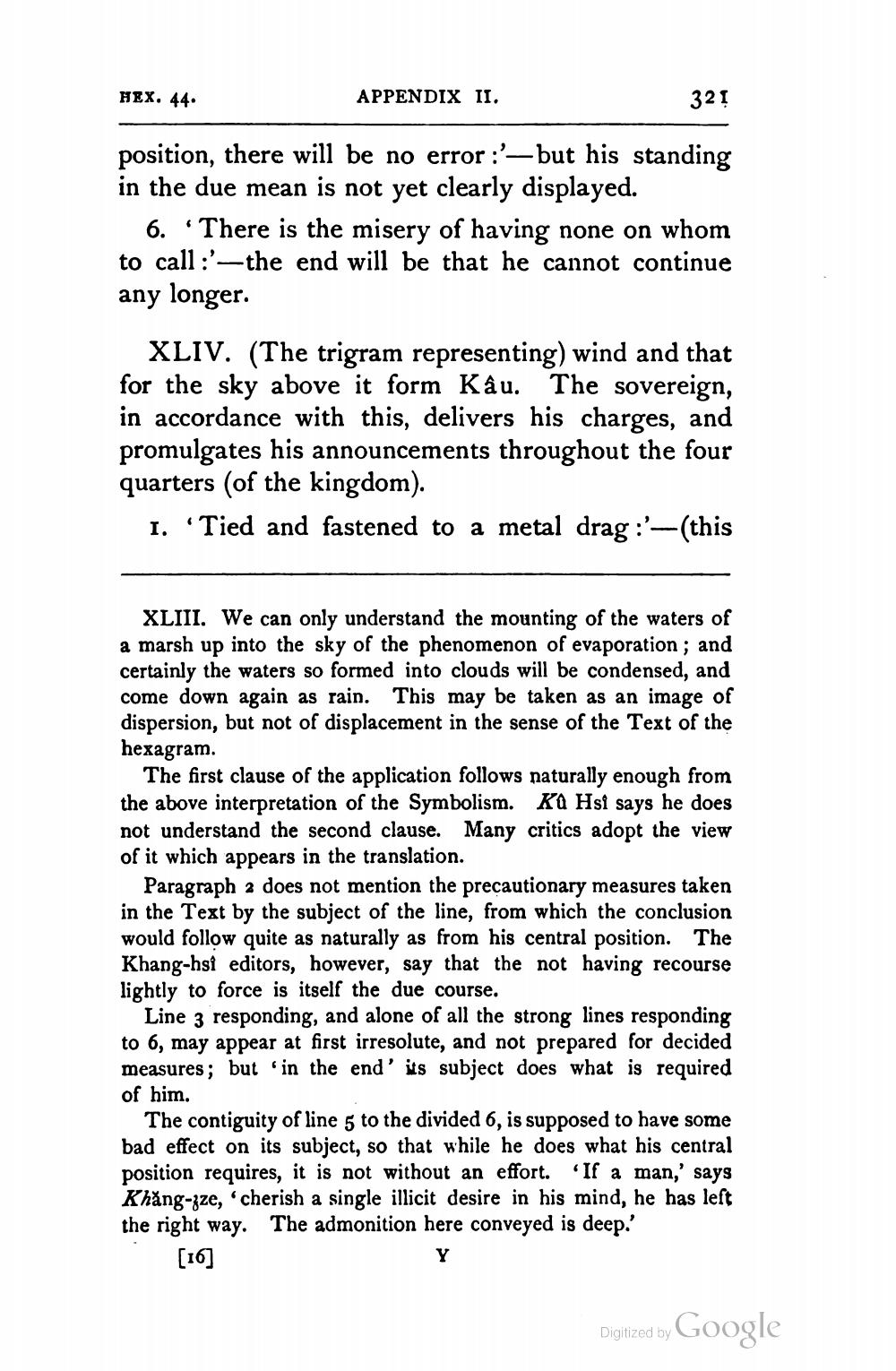________________
HEX. 44.
APPENDIX II.
position, there will be no error:'-but his standing in the due mean is not yet clearly displayed.
"
321
6. There is the misery of having none on whom to call:'-the end will be that he cannot continue any longer.
XLIV. (The trigram representing) wind and that for the sky above it form Kâu. The sovereign, in accordance with this, delivers his charges, and promulgates his announcements throughout the four quarters (of the kingdom).
I. Tied and fastened to a metal drag:'-(this
XLIII. We can only understand the mounting of the waters of a marsh up into the sky of the phenomenon of evaporation; and certainly the waters so formed into clouds will be condensed, and come down again as rain. This may be taken as an image of dispersion, but not of displacement in the sense of the Text of the hexagram.
The first clause of the application follows naturally enough from the above interpretation of the Symbolism. Ku Hsi says he does not understand the second clause. Many critics adopt the view of it which appears in the translation.
Paragraph 2 does not mention the precautionary measures taken in the Text by the subject of the line, from which the conclusion would follow quite as naturally as from his central position. The Khang-hst editors, however, say that the not having recourse lightly to force is itself the due course.
Line 3 responding, and alone of all the strong lines responding to 6, may appear at first irresolute, and not prepared for decided measures; but in the end' its subject does what is required of him.
The contiguity of line 5 to the divided 6, is supposed to have some bad effect on its subject, so that while he does what his central position requires, it is not without an effort. 'If a man,' says Khăng-zze, cherish a single illicit desire in his mind, he has left the right way. The admonition here conveyed is deep.'
[16]
Y
Digitized by
Google




